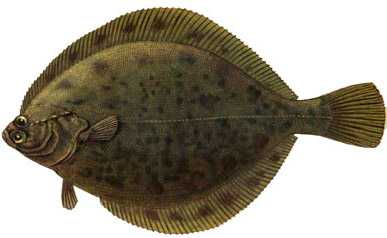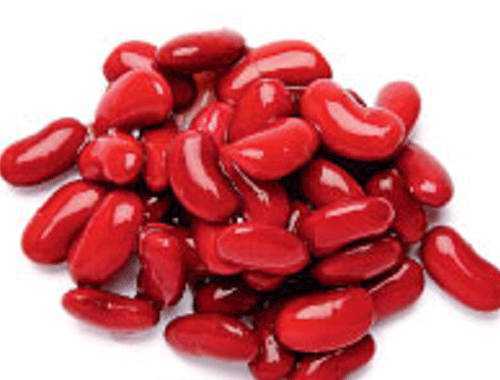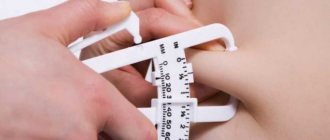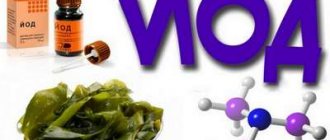Why is iodine needed in the body?
It supports normal thyroid function, has a positive effect on hormonal balance, brain function and improves immunity.
If there is a lack of this substance in the body, a person immediately notices it: emotional stability is disrupted, muscle pain and skin problems appear.
Therefore, it is very important to maintain the required level of iodine.
This element performs a number of basic functions:
- regulates energy exchange in thyroid cells;
- frees cells from harmful substances;
- normalizes breathing intensity;
- fights infections.
Iodine and its consumption
This element was first isolated and studied by French chemists: Napoleon Bonaparte required truly gigantic reserves of gunpowder for his endless wars. The best scientists in France tried to establish the production of components of this explosive from algae and as a result enriched science with the discovery of iodine.
Iodine reacts very actively with a wide variety of chemical compounds, which makes its high concentration dangerous to human health. Fortunately, the quantities of this element that help the body maintain health are measured in millionths of a gram.
To find out if you have iodine deficiency, you need to do a urine test. Here is a table that will help you understand whether you urgently need to introduce additional amounts of this microelement into your diet:
| Concentration of iodine in urine (mcg/liter) | Adequate iodine intake (mcg/day) | The body's supply of iodine |
| Severe shortage | ||
| 20-49 | 30-74 | Marked deficiency |
| 50-99 | 75-149 | a lack of |
| 100-199 | 150-299 | Optimal level |
| 200-299 | 300-449 | Consumption is higher than normal |
| >299 | >449 | Excess |
During pregnancy and breastfeeding, the intake rates for this element increase:
| Category | Iodine intake (mcg/day) |
| Pregnant woman | 220 – 399 |
| Nursing mother | 290 — 399 |
Consequences of iodine deficiency
- Symptoms of iodine deficiency in the body can manifest themselves in different ways. The level of hemoglobin in the blood decreases, so the consequences are quite serious. If the problem is incorrectly diagnosed and the source of trouble is not recognized, then traditional treatment will not be beneficial.
- If the body lacks iodine for an extremely long time, this can lead to mental and physical retardation.
- A deficiency of this substance in a pregnant woman negatively affects the formation of all fetal systems, the formation of the skeleton, and can even cause cretinism. In the early stages, iodine deficiency is fraught with miscarriages and frozen pregnancies.
Foods High in Iodine
It is impossible to compensate for the deficiency even with the most balanced diet. This is rather a preventative measure. If you don’t live by the sea, rarely eat fish and often go on diets, pay attention to foods high in iodine.
Vegetables
The most significant amount of iodine is found in beets and radishes. Don't forget about the benefits of onions, lettuce, peas and asparagus. Other healthy vegetables include cabbage, carrots, tomatoes, spinach and potatoes.
Seafood
They are the richest natural sources of iodine. Seaweed, cod liver, spirulina, mussels - all this can be eaten regularly.
Nuts
The optimal amount of iodine in walnuts and pine nuts. There is much more microelement here than in other varieties of nuts, as well as products of plant origin.
Berries and fruits
The most preferred ones for restoring iodine levels are bananas and strawberries. However, there is no need to give up plums, black currants, persimmons and grapes. Apricots and apples will also help fill the deficit.
Dairy
An excellent rule for a balanced diet is to consume cow's milk, which promotes the complete absorption of iodine. It is recommended to consume about 150-200 ml of milk every day.
Mineral water
Both adults and children will benefit from drinking mineral water enriched with iodine. This water can be purchased at pharmacies or large supermarkets. It is important to remember that you cannot completely replace ordinary water with mineral water.
Fortified products
Large grocery stores sell foods high in iodine. This could be baked goods, milk or soft drinks - information about what substances the product is enriched with can be found on the packaging.
Special fortified milk formulas for children are also produced; they contain this important microelement. Children under 3 years of age can be given this food to prevent iodine deficiency.
Symptoms
Deficiency can manifest itself in different ways.
But there are signs that are most pronounced:
- swelling;
- muscle weakness;
- pain in the thoracic and lumbar spine;
- drowsiness;
- forgetfulness;
- blues, apathy;
- bad mood for no reason;
- memory impairment;
- decreased libido;
- headache;
The deficiency affects not only the thyroid gland, but also the skin. A person may be bothered by its dryness, waxy tint, and the skin loses its elasticity. Disturbances also occur in the gastrointestinal tract: constipation appears, appetite decreases. Failures in metabolic processes lead to excess weight.
Iodine deficiency also affects intimate health. In women it often leads to infertility, and in men it causes impotence. This gives rise to new stress, and against the backdrop of improper functioning of the endocrine system, it develops into chronic depression.
If you do not pay attention to all the symptoms for a long time, then there is a high probability that the thyroid gland will begin to enlarge. Due to the fact that it compresses organs that are located in close proximity, coughing, asthma attacks appear, and a person experiences difficulty swallowing.
What complications can there be?
Lack of iodine can indeed lead to the development of a number of diseases. One of the most common is myxedema. It manifests itself in adults.
Specific symptoms of pathology:
- swelling, especially on the mucous membranes;
- disruption of metabolic processes;
- rapid aging;
- general weakness.
In women, iodine deficiency and its symptoms can lead to endemic goiter. The disease develops against the background of an enlarged thyroid gland. In the most difficult cases, nodes can be seen directly on the neck. This is a very dangerous condition, which many experts classify as precancerous.
Complications are also possible in childhood. Most often they are associated with insufficient physical and mental development. For example, cretinism may develop. This is a congenital pathology that occurs in a child due to the fact that the mother had iodine deficiency during pregnancy.
Main symptoms of diseases:
- disruption of the endocrine gland;
- physical retardation;
- insufficient mental development: speech delay, problematic motor skills.
Endocrinologists point out the particular danger of a lack of a component during pregnancy. This is critical not only for the woman herself, but also for her child. Therefore, it is important to undergo appropriate examinations at each trimester and not leave this problem unattended.
How does deficiency manifest itself in children?
As the body grows, it experiences an increased need for this element. If iodine is not supplied in the required amount, the child:
- gets sick more often;
- eats poorly;
- gets tired quickly;
- has difficulty with physical activity.
As a rule, school performance in such children is reduced.
When the thyroid gland begins to enlarge, it means that the body has been experiencing iodine deficiency for a long time. If treatment is not started, this will lead to physical, mental and mental retardation.
Interesting facts about iodine
The discovery of the trace element occurred at the beginning of the 18th century by the chemist Bernard Courtois, who was engaged in the production of saltpeter - it was later used to produce gunpowder. Saltpeter was extracted from seaweed, where iodine was discovered, becoming an accidental and such an important find. The name was given due to the color of the microelement (“Iodos” translated from Greek means purple). The sources for industrial isolation of iodine are:
- brown oil waters
- seaweed
- sodium nitrate solutions.
Iodine preparations
Iodine preparations are used both externally on the skin and mucous membranes for antiseptic purposes, and internally for atherosclerosis, chronic inflammatory processes in the respiratory tract, tertiary syphilis, chronic mercury and lead poisoning. A separate group of drugs consists of drugs for the treatment and prevention of endemic goiter.
Iodine is also used to treat female diseases - fibrocystic mastopathy, uterine fibroids and endometriosis. In this case, iodine promotes the reactions of converting estradiol into estyrol, a less active hormone.
Contraindications to internal treatment with iodine preparations
- Pulmonary tuberculosis
- Hemorrhagic diathesis
- Kidney diseases
- Boils
- Chronic pyoderma, acne
- Chronic rhinitis
- Intolerance to iodine preparations.
Do not use iodine preparations for external use orally! Long-term use of iodine preparations or exceeding recommended doses leads to the phenomenon of iodism - a sharp decrease in body weight, weakness and loss of vitality, lacrimation, urticaria, Quincke's edema and other allergic manifestations.
Diagnostics
An endocrinologist deals with problems with the thyroid gland, namely iodine deficiency. The qualifications of doctors in this field make it possible to accurately determine the cause that led to pathological deviations, as well as prescribe appropriate treatment. A professional (a doctor with extensive experience) only needs one palpation to determine an enlarged thyroid gland, without additional research methods.
You can diagnose iodine deficiency at home:
- Apply a mesh of iodine to any area of the skin (arm, leg);
- wait a few hours, if the mesh is completely absorbed, then you can say with complete confidence that the microelement is missing (there is not enough of it).
- if after a few hours the mesh begins to disappear, but not completely, there is a microelement, but its quantity leaves much to be desired.
- The visibility of the mesh after a long period of time - 5-6 hours - indicates that you are not experiencing problems with microelement deficiency.
When diagnosing a deficiency of a microelement, experts prescribe a set of studies that help clarify the picture of the state of the thyroid gland:
- blood test for hormone levels (thyroid gland);
- general urine analysis;
- ultrasound examination of the gland.
Causes of iodine deficiency
The iodine requirement for an adult is from 100 to 140 mcg per day. Intake of microelements in smaller quantities can cause disruption of the functions of human systems, which will lead to diseases.
Causes of iodine deficiency:
- Poor nutrition - predominance of foods with low iodine levels;
- living in areas remote from the sea, the natural conditions of which contribute to the leaching or leaching of microelements from the soil. These areas include highlands, hills, and valleys subject to regular flooding. In such areas, grain crops contain trace elements in minute doses;
- infant nutrition consists of artificial mixtures low in nutrients;
- long-term parenteral nutrition. It is often observed that when a patient cannot eat food on his own, he receives it through a vein (drip).

Iodine deficiency is often observed during pregnancy in women, as well as during breastfeeding.
What foods are rich in iodine
Products containing iodine in large quantities are representatives of marine flora and fauna.
- For example, 100 gr. dry kelp (sea kale) completely covers the daily dose of iodine for humans. This does not mean that you should eat exactly this amount every day, because iodine is also found in other foods. But it is possible and necessary to flavor any salads and ready-made dishes with dry seaweed, the main thing is not to subject the product to heat treatment.
- Among animal foods, sea fish and other seafood of animal origin (mussels, shrimp, etc.) are rich in iodine. They should be present in the diet at least 2-3 times a week.
- Among the foods we are familiar with, red meat, eggs, milk, vegetables and fruits are rich in iodine - peas, spinach, tomatoes, potatoes, bananas, black currants, chokeberries.
- Popular wisdom says that 5 grains from an apple (seeds) completely replenish the daily requirement of iodine, the main thing is to chew them well. Some official sources confirm this information, but you definitely shouldn’t abuse this method - in addition to the useful microelement, the grains also contain dangerous hydrocyanic acid.
Based on the table presented (the amount of mcg per 100 grams of product), you can create a diet in such a way that the standard amount of the microelement is supplied with food. At the same time, we must not forget that during heat treatment, about 50% of iodine evaporates. If the doctor has prescribed you to take an iodine-containing drug, this should also be taken into account, without going too overboard with iodine-containing foods.
|
|
|
| |
420 mcg |
350 mcg |
260 mcg |
190 mcg |
135 mcg |
|
|
| ||
150-200 mcg |
80 mcg |
50 mcg |
35 mcg |
5 mcg |
|
|
| ||
110 mcg |
16-20 mcg |
10-11 mcg |
6-7 mcg |
4-5 mcg |
|
|
|
|
|
70 mcg |
30 mcg |
12-20 mcg |
12 mcg |
3-8 mcg |
|
|
|
| |
8 mcg |
6 mcg |
3 mcg |
2-5 mcg |
2 mcg |




























